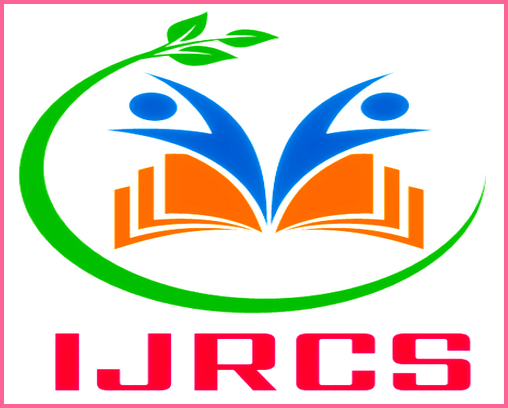“Reviving Ancient Knowledge: Integrating Indigenous Knowledge Systems in Biological Education”
Author(s): Pramod Phirke
Authors Affiliations:
Associate Professor, Department of Zoology, Fergusson College (Autonomous), Pune -411004, Maharashtra, India.
DOIs:10.2017/IJRCS/202504004 | Paper ID: IJRCS202504004Indigenous Knowledge Systems (IKS) is the knowledge assets that have evolved in India. It offers rich understanding of the natural world with holistic and integrated perspectives on biological phenomena and ecological sustainability. This article deals with the importance of incorporating Indian Knowledge system in contemporary science curriculum, especially in life sciences which will enhance a greater understanding of key concepts and sustainable practices in students. The Indian traditional knowledge available in our scriptures like Charak Sanhita, Sushruta Sanhita, Vedas, Ayurvedas offers elaborative descriptions medicinal plants, anatomy and life processes, taxonomy and classification, ecology and biodiversity conservation and sustainable resource management. This knowledge provides accurate solutions for many social, economic and ecological problems even today. Integrating views of IKS in contemporary science education can inculcate more holistic, culturally appropriate, and sustainable approach of biological science in the students. It will enhance the respect for indigenous knowledge and its use in modern society.
Pramod Phirke(2025); Reviving Ancient Knowledge: Integrating Indigenous Knowledge Systems in Biological Education, International Journal of Research Culture Society, ISSN(O): 2456-6683, Volume – 9, Issue – 4, Pp.16-20. Available on – https://ijrcs.org/
- Agarwal, A., & Narain, S. (1997). Dying Wisdom: Rise, Fall and Potential of India’s Traditional Water Harvesting Systems. Centre for Science and Environment.
- Aggarwal, B. B., Sundaram, C., Malani, N., & Ichikawa, H. (2007). “Curcumin: The Indian solid gold.” Advances in Experimental Medicine and Biology, 595, 1-75.
- Chandrasekhar, K., Kapoor, J., & Anishetty, S. (2012). Ashwagandha (Withania somnifera) root extract as an adaptogen: A clinical trial. Phytomedicine, 19(12), 1205-1209.
- Gadgil, M., & Vartak, V. D. (1976). Sacred groves of India: A plea for continued conservation. Journal of the Bombay Natural History Society, 72, 314-320.
- Grzanna, R., Phan, P., & Glade, M. J. (2005). Ginger—An herbal medicinal product with broad anti-inflammatory properties. Journal of Medicinal Food, 8(2), 125-132.
- Gupta, M., & Mishra, R. (2019). Comparative analysis of folk taxonomic systems and evolutionary relationships in bamboo species of the Eastern Himalayas. Economic Botany, 73(5), 553-562.
- Handayani et al., (2018). Elaborating Indigenous Knowledge in the Science Curriculum for the Cultural Sustainability. Journal of Teacher Education for Sustainability20(2):74-88 DOI:2478/jtes-2018-0016
- Hankey A. (2001). Ayurvedic physiology and etiology: Ayurvedo Amritanaam. The doshas and their functioning in terms of contemporary biology and physical chemistry. Journal of Alternative and Complementary Medicine,7(5):567-574.
- Joshi SK. (2010). Marma Science and Principles of Marma Therapy. Delhi: Vani Publications;
- Lad V. (2002). Textbook of Ayurveda: Fundamental Principles. Albuquerque: The Ayurvedic Press.
- Malhotra, K. C., Gokhale, Y., Chatterjee, S., & Srivastava, S. (2001). Cultural and Ecological Dimensions of Sacred Groves in India. Indira Gandhi Institute of Development Research.
- Mavuru and Ramnarain. (2020). Learners’ socio-cultural backgrounds and science teachingand learning: a case study of township schools in South Africa. Cultural Studies of Science Educationhttps://doi.org/10.1007/s11422-020-09974-8
- Nair KN. (2012). Taxonomic Paradigm in Ayurveda. Ancient Science of Life.31(4):132-140.
- Nautiyal, S., Bisht, V., Rao, K. S., & Maikhuri, R. K. (2008). Agrobiodiversity conservation in traditional agroecosystems of the Central Himalaya. Journal of Biodiversity, 9(2), 15-27.
- Okpokwasili, Nonyelum P.1 and Oladipupo, Roseline. (2019). Appropriate Teaching Methods for Teaching Indigenous Knowledge in Universities in Nigeria, International Journal of Science and Research, Vol. 8 Issue 1, pp 2185-2190.
- Poffenberger, M., & McGean, B. (1996). Village Voices, Forest Choices: Joint Forest Management in India. Oxford University Press.
- Puri, R. (2017). Functional classification of bamboo by tribal communities of the Eastern Himalayas and its relevance to modern taxonomy. Indian Journal of Traditional Knowledge, 16(3), 500-510.
- Raghunandan, S., & Gupta, A. (2019). “Kapha dosha, structural proteins, and immune response: Bridging traditional Ayurveda with modern immunology.” International Journal of Ayurvedic and Immunological Studies, 8(4), 330-337.
- Ramanujan, K., & Verma, S. (2014). Ecological roles and classification of fish species among Indian coastal fishing communities: Implications for conservation. Environmental Biology of Fishes, 97(4), 423-438.
- Rastogi S. (2010). Building bridges between Ayurveda and modern science. International Journal of Ayurveda Research,1(1):41-46.
- Robbins, P. (1998). Authority and Environment: Institutional Landscapes in Rajasthan, India. Annals of the Association of American Geographers, 88(3), 410-435.
- Seshadri, T. R., & Choudhary, R. (2016). “Recent research in Ayurvedic perspectives: Correlations between dosha theory and biological concepts.” Journal of Ayurvedic and Integrative Medicine, 7(3), 105-112.
- Sharma PV. (2013). Dravyaguna Vijnana. Varanasi: Chaukhambha Bharati Academy.
- Sharma, B. R., Samra, J. S., Scott, C. A., & Wani, S. P. (2010). Watershed Management Challenges: Improved Productivity, Resources and Livelihoods. CAB International.
- Sharma, P., & Chandola, H. (2014). “Metabolic pathways and enzymatic reactions: Understanding Pitta dosha in modern biology.” Journal of Ayurvedic Biology and Medicine, 12(2), 211-218.
- Singh, J. (2016). Inclusive Education in India: Concept, Need and Challenges. SRJIS Bimonthly, 3, 3222.
- Srinivasan, R., & Natarajan, M. (2011). Folk knowledge and its concordance with modern taxonomy in the coastal regions of India. Journal of Ethnobiology, 15(2), 221-233.
- Teschke, R., Schwarzenboeck, A., & Stieger, B. (2011). “Kava hepatotoxicity: A clinical review.” Annals of Hepatology, 10(4), 421-428.
- Unnikrishnan Payyappallimana, (1998). Animals in Ayurveda (Unnikrishnan PM: Animals in Ayurveda. Amruth 1-15.Suppl 1.
![]()





